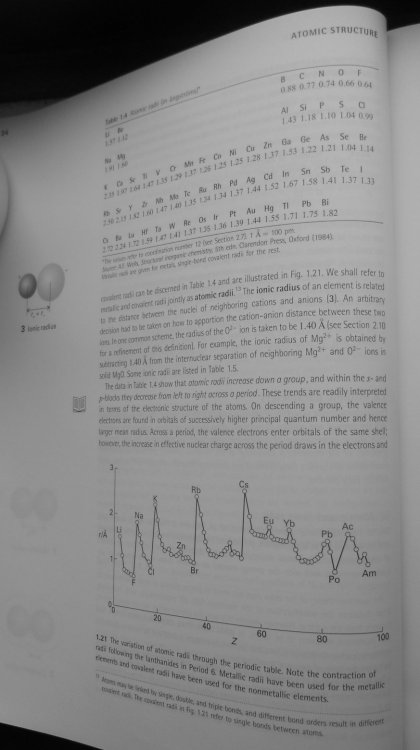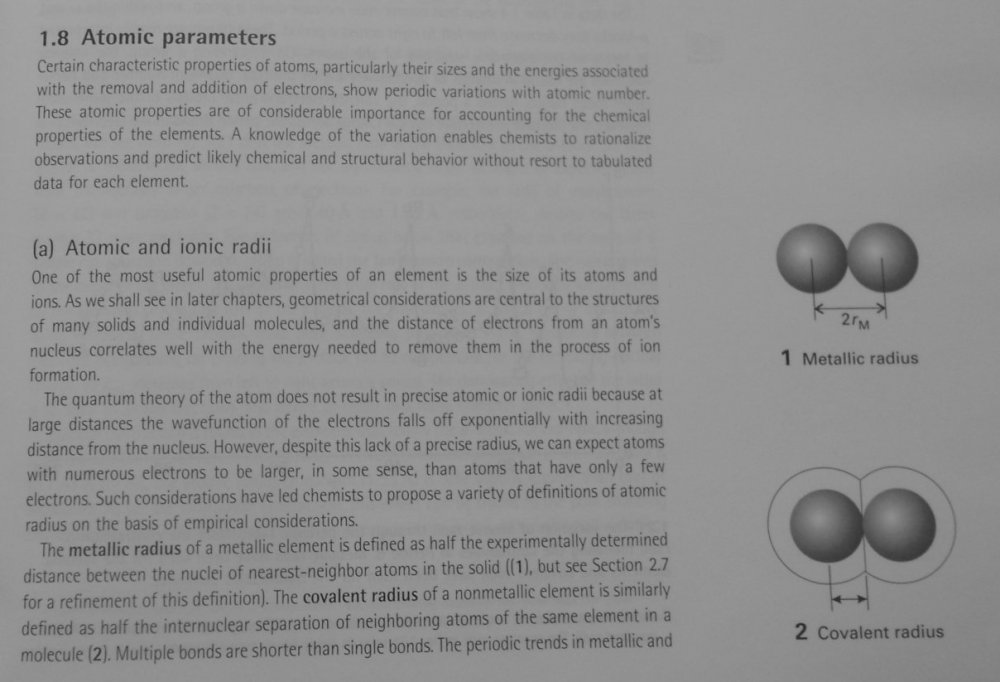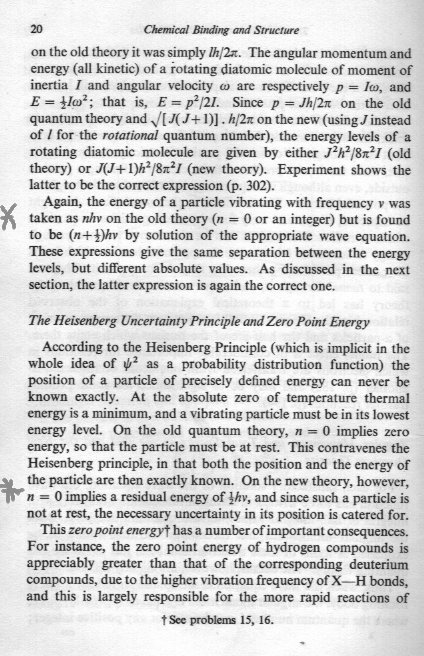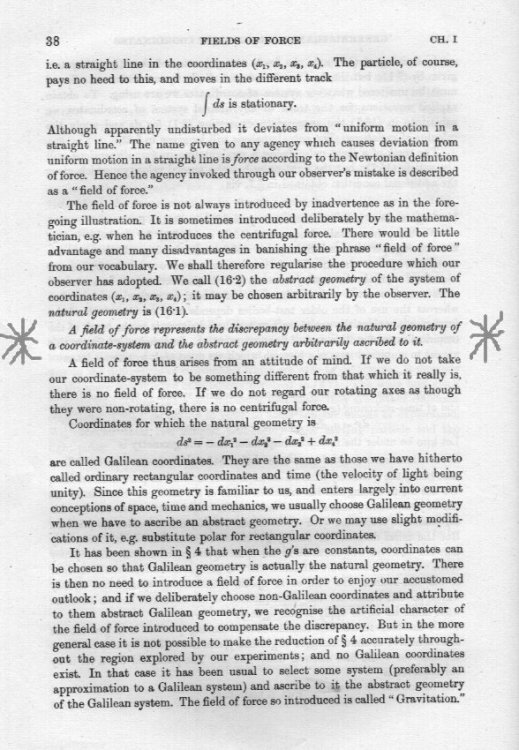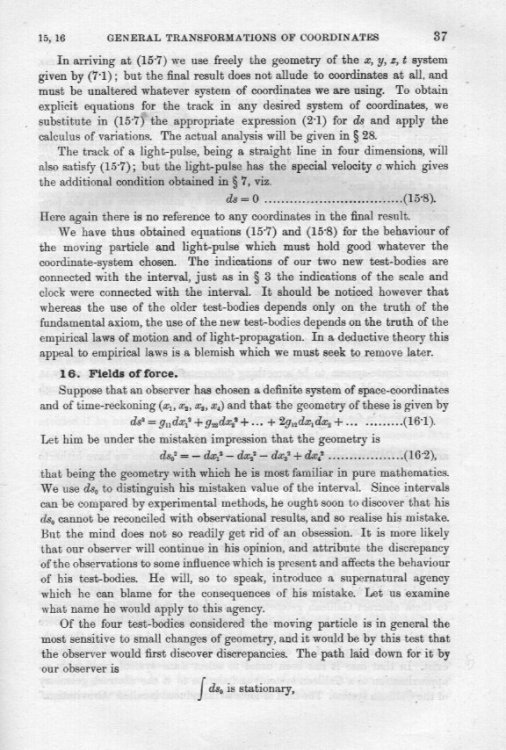-
Posts
18314 -
Joined
-
Last visited
-
Days Won
104
Content Type
Profiles
Forums
Events
Everything posted by studiot
-
Is density measured in mL ? Is volume measured in g ? Let us try this again The copper sample sinks to the bottom and does not absorb any water or dissolve. so all the rise in in water level is due to the volume of copper sample. So volume of copper sample = water level after copper added - water level before copper added = ? units? Mass of copper = 5g (given) So density of copper sample = mass of copper sample / volume of copper sample = ? units ??
-
That is correct if you mean smallest to largest. It is also the order from my data, although some of their numbers are different. But this exercise is good because it gets you looking at the periodic table to compare things. This is good practice and helps you get comfortable with it. For the same reason did you identify the elements A,B C and D ? This also helps you get comfortable with electron shells, 1, 2 3 and subshells, 1s 2p, 3p etc.
-
What does your book say about the size of atoms on page 187 ? I don't know what that book is. I am trying to help you learn some stuff here.
-
No, not really it is a complicated subjct but provides the opportunity to learn a lot. The size of an atom is given by its atomic radius. My idea was for you to identify each element from the atomic number and then look up the size in a table of atomic radii like this one. https://en.wikipedia.org/wiki/Atomic_radii_of_the_elements_(data_page) You can see from the article that there are several different ways to say how large an atom is. Wiki also says briefly how the variation in size is realted to the periodic table. A better explanation, with a graph nd pictures apears in the two attachments. Note that although my attachments have slightly different values, the order is the same. So would you like to try again and also state which elements you think A, B, C and D correspond to?
-

Electricity (split from Science Project (static charge))
studiot replied to westom's topic in Classical Physics
In an effort to preserve some clarity for the OP, I would observe that there is a difference between true, more exact or complete Physics theory and idealised theory we set up to apply th more exact to the everyday world. In Mechanics we are much more up front about this and happily understand and employ light inextensible strings, frictionless motion etc. But in electrical subjects we mix up the Physics with Circuit Theory, which is an artificial theory constructed using idealised circuit elements. This is unfortunate as it leads many students to become confused. So, westom, what pray is the voltage difference between any two points in a connecting wire carrying 1 kiloamp, 1 amp, 1 microamp? In most Circuit theories (including Maxwell's) it is exactly zero. Which brings me to my second point, and what seems to be one of your points of confusion. 'Voltage' is indeed a tad imprecise as it the unit for two different physical quantities. Electrical potential and (electrical) potential difference. Mixing these two up will doubtless lead to confusion. Finally the terms 'earth' and 'ground' come from Circuit Theory, not from Maxwell and other fundamental Physics. All the uses of either stem from the ability of this circuit element to sink or source any quantity of current without change in potential. -
Start by counting th numbr of electrons for each one. This is the same as the numbr of protons which is the same as the atomic number. So you can then identify each one.
-
The atomic number of Cobalt is 27 so you have that correct. This is the number of protons. For the question you need to know that mass number = number of protons + number of neutrons Which in this case is = 27 + 37 = 64 We write this as follows [math]{}_{atomic\,no}^{mass\,no}Co[/math] So for your particular isotope of Cobalt you should have [math]{}_{27}^{64}Co[/math] The istope you chose is not correct. Cobalt 60 is a common radioactive istope., but you require cobalt 64. There are 28 different isotopes of Cobalt to choose from.
- 1 reply
-
1
-
It is not the antithesis, but it is not "truly" random (the clue is in the name ) You can define (or measure) randomness in statistical terms (how evenly spread are the set of numbers, for example). A good PRNG will be able to match a true random source for many of these. But it will repeat (exactly) at the end of the sequence. And any two systems implementing the same PRNG will produce the same results. In a lot of cases, this is a useful feature. For example, spread-spectrum transmission works by multiplying a signal with a PRNG. This makes the signal look like noise but mean that a receiver (using the same PRNG) can detect/decode the signal by convolving the input "noise" with the PRNG sequence, thus picking it out of the really random background noise. Well I think that shows enormous insight. Does it imply that if I fire off two instances of a 'random' process from the same trigger, I should measure identical results? eg If I have two alpha paticle generators and fire off single alpha particles at identiclal targets together I should measure identical scattering? Or if I let two s electrons in two hydrogen atoms start from the same point at the same time I should find them at the same place a fixed time later?
-

Electricity (split from Science Project (static charge))
studiot replied to westom's topic in Classical Physics
Apparently. 🤣 But I also said current without voltage, and current is a flow of charge. So this particular sparkling charge is also flowing like the Champagne. Cheers -

Electricity (split from Science Project (static charge))
studiot replied to westom's topic in Classical Physics
It is possible to have voltage without current, and also current without voltage. -
No it is not rare, it is just that the simple harmonic oscillator is a good enough approximation for most purposes. Jeffrey Steinfeld discusses anharmonicity in spectroscopy in his (advanced) book Molecules and Radiation - An introduction to Modern Molecular Spectroscopy Dover
-

Electricity (split from Science Project (static charge))
studiot replied to westom's topic in Classical Physics
We were not told the environment. Thinking further about this, you do need to know more about the circumstances. Do I understand that this is a theoretical exercise, not a practical one from these answers? I ask because appropriate action depends upon where the person being shocked. 1) where the person acquires the charge 2) Where that person is being shocked by the discharge As you pointed out it is very common for (some) people to aquire a charge through friction rubbing against clothing, carpets etc. So I am assuming that this friction is when the person is running on the treadmill. Subsequently the person either grabs a metal bar on the running machine and is shocked. Or walks off, carrying the charge with him, and is subsequently shocked when he touches something metal, say the locker cabinet. Earthing the bar on the running machine will not help with either of these situations, nor will sweeping up the opposite charge from the moving running platform. Indeed the exposed metalwork may already be earthed. In these circumstance the discharge has to take place somehow and so the action required is to limit the discharge current to a level where it is not noticeable. Too slow the discharge down (thus limiting the current) you can interpose a partly conductive material (eg a wet towel) or if the discahrge is to a metal bar on the machine then wrap a permanent conductive foam layer round part of the bar for grabbing onto before touching the bare metal. -

my hypothesis: dark matter observations are relative
studiot replied to Maartenn100's topic in Speculations
I hope I have not offered the impression that we cannot correct for all the (known) effects. I also find it disappointing that the OP has ignored my earlier comments trying to nudge his ideas in a more fruitful direction since others have had and investigated not dissimilar thoughts before. -
Quite apart from the logical inconsistencies in this post, I see that you are using the US terminology for ground and earth, as opposed to UK/European termonilogy, which is somewhat different. I do agree however that all of the 'grounds' you mention arise differently they all conform to a common definition of an electrical ground. I do not agree that any of this progresses the OP quest for a solution to his problem, however. Has your alleged 50 years experience nothing to offer?
-

my hypothesis: dark matter observations are relative
studiot replied to Maartenn100's topic in Speculations
Good points. You actually measure the corrections. I have no 'feel' for the numbers involved or thus what it would take for one effect to balance another. I am bearing in mind that the OP is claiming there are no points in space where the net effects are zero. -

my hypothesis: dark matter observations are relative
studiot replied to Maartenn100's topic in Speculations
Have we not measured dilation effcts on clocks orbiting the Earth at (high) velocity? -

my hypothesis: dark matter observations are relative
studiot replied to Maartenn100's topic in Speculations
I fully accept that this is a balance of forces, but does not the "equivalence principle" apply, since we are talking GR ? We include the effect of rotation in the value of 'g' as measured on Earth, ie it is not solely gravitational. -
-

my hypothesis: dark matter observations are relative
studiot replied to Maartenn100's topic in Speculations
lagrange points ? https://solarsystem.nasa.gov/resources/754/what-is-a-lagrange-point/ -

Electricity (split from Science Project (static charge))
studiot replied to westom's topic in Classical Physics
+1 -

my hypothesis: dark matter observations are relative
studiot replied to Maartenn100's topic in Speculations
-
Yes and no. Fluids and fluid mechanics includes liquids, gases and plasmas. Magnetohydrodynamics started off studying the interaction between the mechanical properties and th electrical properties of gases and plasmas though its ambit seems to have been extended to include liquids and solutions such as copper sulphate solution. I suppose this was because there is a very marked difference between those interactions when the fluid is a plasma or gas and when it is a solution or liquid. In gases as against liquids, the fluid velocities tend to be much larger, the densities much lower so the particles have much more space to operate in. This significantly affects the interactions. In plasmas and gases (compressible fluids) the average distance between particles is large but subject to large mechanical interactions that can bring them close together. These effects include Venturi effects, Sonic effects (Alven waves) , Shockwaves. In solutions the ions are close together and interact electrostatically to produces such effects as polarisation and overpotential, effects hardly seen in gases. So yes Copper sulphate solution is electrically neutral overall and it contains ions, both positive and negative. Both ions can move and will do so selectively under the influence of an electric field, otherwise they move about randomly in solution. They do not separate but remain mixed up. With an electric field the negative ones move towards what is called the cathode and positive ones move towards the anode. This means there is an equal and opposite current of positive ions moving one way and negative ones moving in the opposite direction. But this only happens if there is an externally connected circuit. Electrons then enter the solutions at the anode and leave at the cathode via this connection. The total current is thus the sum of both ionic magnitudes. There are no free electrons in solution. @ Strange Connecting wires are also electrically neutral. Electrons enter at one end and leave at the other. The addition of an external magnetic field raises more interaction possibilities, particularly for fast moving gaseous and plasma charged particles. In summary, in solutions electrical resistance (conduuctance) dominates the electrical side of the interaction and compression density dominates the mechanical side. Whilst in plasmas and gases reactive impedance effects dominate the electrical effects and density chages the mechanical ones. Please note this is a very broad brush treatment and this is currently a rapidly developing Science.
-
You have drawn 4 poles, not 2. Why do you think magnetic cores are not made in this way; (the end cheecks of a coil winding bobbin are made of non magnetic material)?
-
I always understood that this was the other way around. That is the zero point energy was introduced because of the uncertainty principle since at the zero point both uncertainty variables, in a pair, would be uniquely determined without it. Used in spectroscopy to account for line broading/emission time/absorbtion time in spectroscopy resolution.
-
Well fluids that leak out of properly fabricated metal containers are likely to be light gases such as hydrogen or helium, and that is yet a different situation. Why don't you properly describe the situation ?


